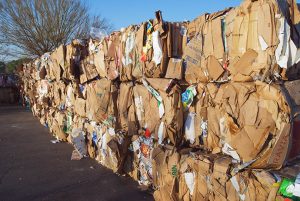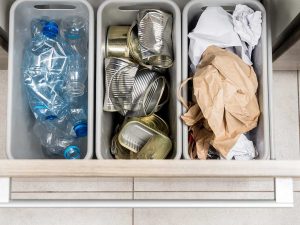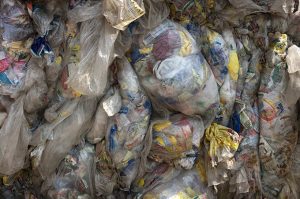
The nation’s largest glass beneficiation company caught the attention of a private investment firm, which announced last week it will acquire the operation.

The nation’s largest glass beneficiation company caught the attention of a private investment firm, which announced last week it will acquire the operation.
 A movie studio that paid $1,500 to purchase a chair will often want it gone as soon as the shoot is finished. The L.A. Shares program in America’s second-largest city works to ensure the chair is donated instead of sent into the waste stream.
A movie studio that paid $1,500 to purchase a chair will often want it gone as soon as the shoot is finished. The L.A. Shares program in America’s second-largest city works to ensure the chair is donated instead of sent into the waste stream.
 Cartons, corrugate, expanded polystyrene, film and pouches are among the materials and products California officials say could be subject to mandatory packaging management rules.
Cartons, corrugate, expanded polystyrene, film and pouches are among the materials and products California officials say could be subject to mandatory packaging management rules.
 The upstream impacts of China’s import restrictions have been increasingly covered in national and local press, raising the level of public consciousness about where recyclables ultimately end up and how that could all change.
The upstream impacts of China’s import restrictions have been increasingly covered in national and local press, raising the level of public consciousness about where recyclables ultimately end up and how that could all change.
 MRF company ReCommunity and Ann Arbor, Mich. have agreed to settle their legal dispute without an award of money to either party.
MRF company ReCommunity and Ann Arbor, Mich. have agreed to settle their legal dispute without an award of money to either party.
 The U.S. OCC market plummeted last week as China substantially slows its recovered material imports. Inside China, the lack of import capability has driven domestic OCC prices sky high.
The U.S. OCC market plummeted last week as China substantially slows its recovered material imports. Inside China, the lack of import capability has driven domestic OCC prices sky high.
 China’s import policy changes are forcing U.S. recycling companies to seek adjustments to municipal contracts, stockpile materials and even landfill recyclables.
China’s import policy changes are forcing U.S. recycling companies to seek adjustments to municipal contracts, stockpile materials and even landfill recyclables.
 Experts in product stewardship convened in Montreal last week to review the opportunities and challenges confronting current materials recovery initiatives.
Experts in product stewardship convened in Montreal last week to review the opportunities and challenges confronting current materials recovery initiatives.
 State recycling money is on the chopping block in Pennsylvania, the latest arena in which legislators look to draw from recycling support funds as a way to balance the state budget.
State recycling money is on the chopping block in Pennsylvania, the latest arena in which legislators look to draw from recycling support funds as a way to balance the state budget.
 One report indicates that buyers in China are desperately seeking domestic sources of recovered paper. Meanwhile, low-value plastics are flooding the European market, but processors there have limited ability to handle those loads.
One report indicates that buyers in China are desperately seeking domestic sources of recovered paper. Meanwhile, low-value plastics are flooding the European market, but processors there have limited ability to handle those loads.

